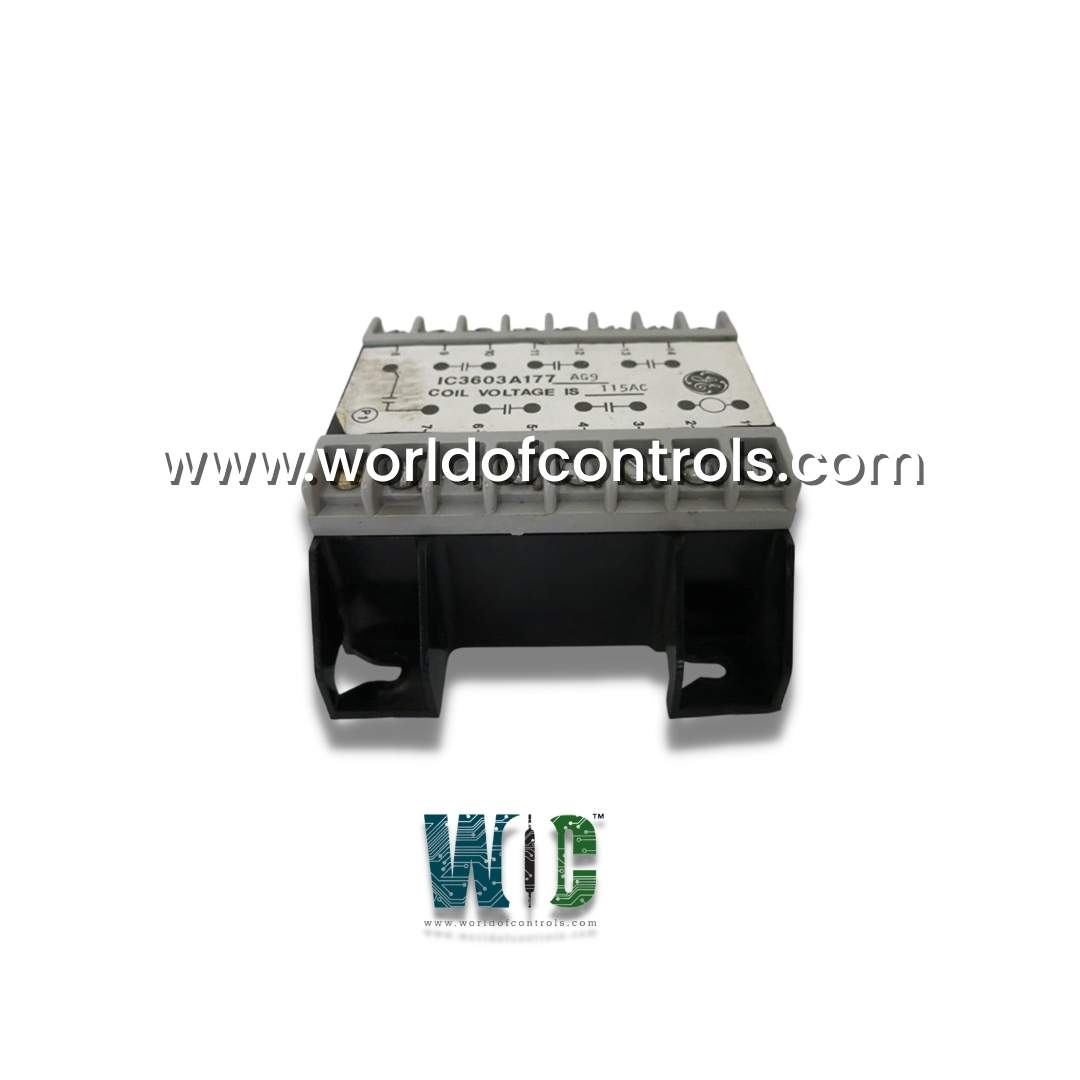
World Of Controls understands the criticality of your requirement and works towards reducing the lead time as much as possible.
IC3603A177A - Potted Relay Module is available in stock which ships the same day.
IC3603A177A - Potted Relay Module comes in UNUSED as well as REBUILT condition.
To avail our best deals for IC3603A177A - Potted Relay Module, contact us and we will get back to you within 24 hours.
Part No.: IC3603A177A
Manufacturer: General Electric
Product Type: Potted Relay Module
Availability: In Stock
Series: VersaMax
IC3603A177A is a Potted Relay Module developed by GE. It is a part of GE Mark I and II series. The module functions in control logic circuitry, where it is responsible for switching electrical signals and activating control functions based on predefined sequences and operating conditions. It has protective encapsulation of the relay components in a durable insulating compound.
The speed control system is a fundamental component of the turbine control mechanism, designed to regulate turbine operation based on a predefined setpoint. This setpoint represents the desired speed or load condition for the turbine, and the control system continuously adjusts the turbine's output to align with this target. There are two primary modes of operation.
Additionally, the system accounts for the rate of change of the setpoint, which directly influences how quickly the turbine responds to commands—this governs the loading and unloading rates. Operators can select predefined load setpoints and programmable ramp rates to ensure smooth and controlled transitions during power changes.
The setpoint input can be commanded from two main sources:
For generator-driven gas turbines, there is an added level of control through a load limiter. This device adjusts the turbine load based on a feedback signal proportional to the actual generator output. The load limiter is capable of switching between three predefined load levels:
This combination of modes and control features enables flexible, safe, and efficient operation of the turbine across a variety of load and grid conditions.
The WOC team is always available to help you with your Mark I and II requirements. For more information, please contact WOC.
What is IC3603A177A?
It is a Potted Relay Module developed by GE.
How is the turbine load controlled in droop mode?
In droop control, the load is determined by the setpoint. As load increases, the turbine speed decreases slightly, and the system adjusts power output accordingly to maintain balance with the grid.
What determines how quickly a turbine loads or unloads?
The rate of change of the setpoint governs the loading and unloading speeds. Predefined load points and adjustable ramp rates help manage transitions smoothly.